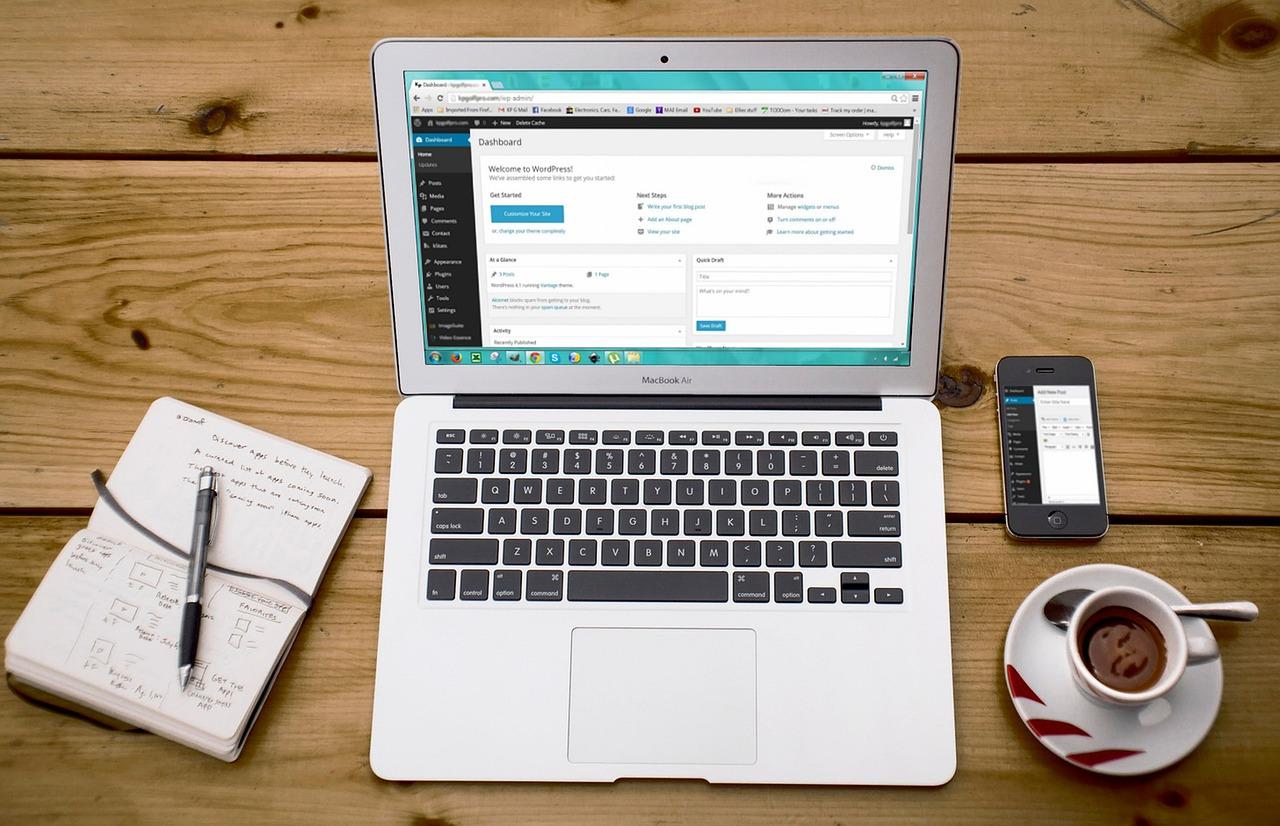Unlock your design potential with the best wireframing tools! Whether you’re a seasoned pro or just starting out, these 6+ powerful platforms will elevate your creativity, streamline collaboration, and transform your ideas into stunning visuals. Start designing your dream project today!
6+ Best Tools to Design Wireframes
In the fast-paced world of digital design, the ability to bring an idea to life visually is paramount. Wireframing stands as a crucial step in this creative journey, providing a blueprint that bridges concept and execution. Whether you’re a seasoned designer or just stepping into the realm of UI/UX, the right tools can elevate your wireframing process from mundane to extraordinary. Imagine transforming your visions into dynamic wireframes that not only capture your audience’s attention but also enhance their user experience. In this article, we will explore the six best tools for designing wireframes—each one a powerful ally in your quest for innovation and creativity. Get ready to unleash your imagination and redefine your design approach, as we guide you through options that can inspire your next big project!
The Power of Wireframing in Design Success
Wireframing is a crucial step in the design process, serving as the blueprint that guides the entire project. It enables designers to visualize the structure and functionality of a website or application before diving into detailed design work. By creating a skeletal framework, wireframing helps to clarify ideas, align stakeholder expectations, and streamline the design workflow.
The beauty of wireframing lies in its ability to foster collaboration among team members. When everyone can see a tangible representation of the design concept, discussions become more focused and productive. This shared visual language minimizes misunderstandings and ensures that all parties are on the same page. It’s a powerful tool for gathering feedback early on, allowing for adjustments to be made without the time and expense of high-fidelity mockups.
Moreover, wireframes serve as a roadmap for developers, helping them understand the intended functionality and flow of the project. Clear wireframes can significantly reduce the risk of miscommunication and rework, leading to smoother handoffs between designers and developers. This collaborative spirit ultimately contributes to a faster and more efficient design process, empowering teams to deliver high-quality results.
Choosing the right tools for wireframing is essential to maximize its potential. Various applications offer unique features, catering to different needs and preferences. Whether you’re looking for simplicity, advanced functionality, or collaboration capabilities, there’s a tool out there that can elevate your wireframing experience. Here are some of the top tools you might consider:
| Tool Name | Key Features | Best For |
|---|---|---|
| Figma | Real-time collaboration, prototyping | Team projects |
| Sketch | Vector graphics, plugin support | Mac users |
| Adobe XD | Integration with Adobe products, user testing | Adobe ecosystem users |
| Balsamiq | Low-fidelity wireframing, quick mockups | Rapid prototyping |
| Axure RP | Interactive prototypes, dynamic content | Complex projects |
In the fast-paced world of design, wireframing is not just an optional step; it’s a vital component that can significantly impact the success of your project. By investing time in creating thoughtful wireframes, you set the stage for a more streamlined design process that can adapt to changes and challenges. The right tools enable you to harness this power effectively, ensuring that your design vision is realized and celebrated by users.
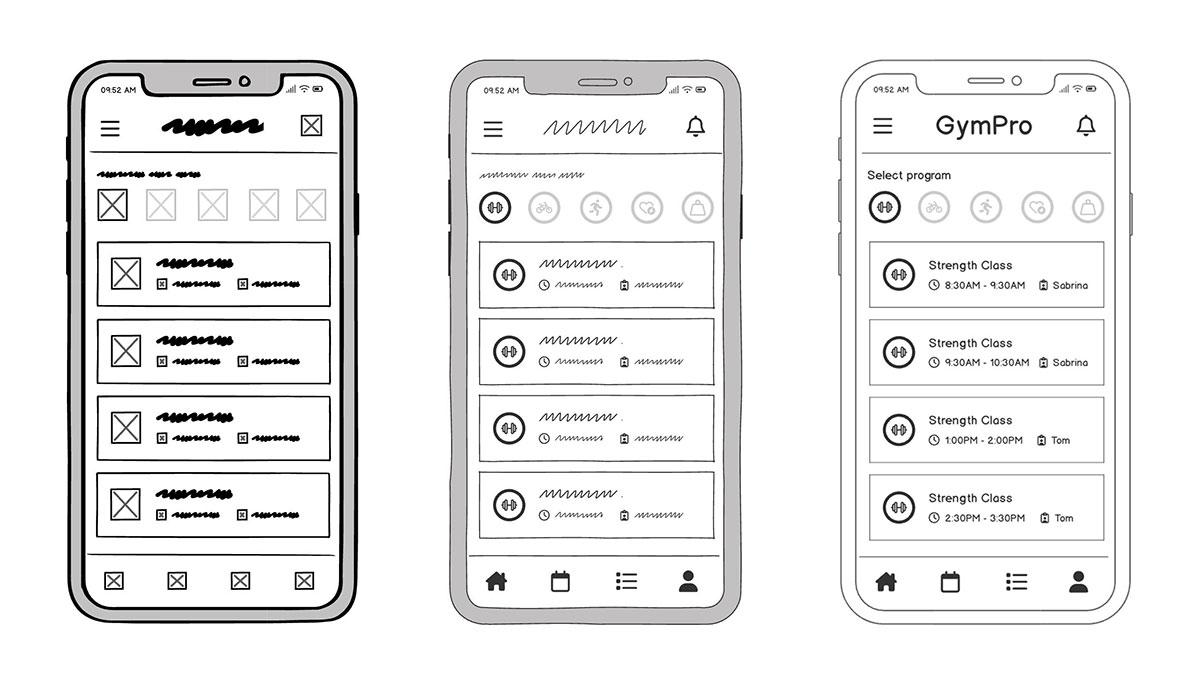
Unlocking Creativity: Why Wireframes Matter
Wireframes serve as the backbone of any successful design project, offering a fundamental structure that enables designers to visualize functionality and layout before diving into the more intricate aspects of the design process. By providing a clear blueprint, wireframes allow for creative exploration without the constraints often imposed by high-fidelity designs. This early-stage representation fosters a collaborative environment where ideas can flow freely, ensuring that every voice is heard and taken into account.
One of the most significant advantages of wireframing is the ability to iterate swiftly. Designers can sketch multiple variations of a layout, experimenting with different configurations and elements. This agility not only improves the final design but also strengthens the team’s collective creativity. With the right tools, wireframes can be easily edited and shared, making it simple to solicit feedback and make necessary adjustments on the fly.
Moreover, wireframes bridge the gap between stakeholders and designers. They provide a tangible reference point that helps non-designers grasp the vision behind a project. This visual communication tool demystifies the design process, allowing for constructive discussions around usability and functionality. When everyone is on the same page, the path to a successful product becomes clearer and more focused.
In addition to facilitating collaboration, wireframes also help in identifying potential issues early in the design process. By visualizing the user journey and interactions, designers can pinpoint obstacles or confusing elements that may detract from the user experience. Addressing these issues at the wireframing stage can save time and resources later on, leading to a more polished final product.
| Benefits of Wireframing | Description |
|---|---|
| Clear Structure | Establishes a foundational layout for design projects. |
| Rapid Iteration | Encourages quick changes and exploration of various designs. |
| Enhanced Communication | Facilitates a shared understanding among team members. |
| Early Problem Identification | Allows for the discovery of usability issues before detailed design. |
Ultimately, wireframes are more than just a preliminary step in the design process; they are a catalyst for creativity and innovation. By laying the groundwork for thoughtful design, wireframes empower teams to explore new ideas, refine concepts, and enhance user experiences. Embracing this vital tool in your design toolkit will not only elevate the quality of your projects but also inspire a culture of creativity and collaboration.
Essential Features to Look for in Wireframing Tools
When choosing wireframing tools, several essential features can significantly enhance your design workflow and creativity. Here are some key attributes to consider:
- User-Friendly Interface: The best wireframing tools offer an intuitive interface that allows both beginners and experienced designers to navigate effortlessly. Look for drag-and-drop capabilities and customizable workspace options that streamline your design process.
- Collaboration Features: Effective communication among team members is crucial. Opt for tools that enable real-time collaboration, commenting, and sharing functionalities, allowing your team to work together seamlessly, regardless of location.
- Template Library: A rich library of pre-built templates can save you valuable time in the design phase. Choose a tool that offers a variety of templates to kickstart your projects, covering different industries and design needs.
- Responsive Design Capabilities: With a growing number of users accessing websites on mobile devices, it’s essential to select a wireframing tool that allows you to design and preview responsive layouts easily.
- Integration Options: Compatibility with other design and project management tools can enhance your productivity. Ensure that your chosen wireframing software integrates smoothly with platforms like Sketch, Figma, or Jira, to maintain a cohesive workflow.
Additionally, consider the following features to further refine your selection:
| Feature | Importance |
|---|---|
| Exporting Options | Flexible exporting formats, including PNG, PDF, and HTML, are vital for sharing designs with clients or stakeholders. |
| Customizable UI Elements | The ability to create and modify UI components ensures that your wireframes accurately reflect your brand’s style and functionality. |
| Version Control | Keeping track of changes and revisions is crucial in any design project. Choose a tool that offers version history to revert to previous iterations when necessary. |
investing time into finding the right wireframing tool with these essential features will pay off in the long run. By prioritizing user-friendliness, collaboration, and responsive design capabilities, you can set the stage for successful projects and innovative design solutions.

User-Friendly Interfaces: A Game Changer in Design
In the fast-evolving landscape of digital design, the emphasis on user-friendly interfaces has never been clearer. Designers are no longer just creators; they are innovators who strive to enhance user experience at every turn. By prioritizing usability, designers can transform complex ideas into intuitive designs, making interactions seamless and enjoyable.
One of the key elements that contribute to a successful user experience is the wireframe. A wireframe serves as a blueprint for a digital product, guiding designers through the initial stages of development. It allows teams to visualize layout and structure, ensuring that every component serves a purpose. Here are some compelling reasons why wireframes are indispensable:
- Clarity and Focus: Wireframes strip away distractions, allowing designers and stakeholders to focus on functionality and flow.
- Efficient Collaboration: Sharing wireframes fosters collaboration between team members, ensuring that everyone is on the same page.
- Cost-Effective Iteration: Early detection of design flaws or misunderstandings can save time and resources in the later development phases.
Moreover, the right tools can elevate wireframing to new heights. The best wireframe design tools not only simplify the process but also empower creators to produce stunning interfaces that resonate with users. Imagine having the capability to craft interactive prototypes that mimic the final product, enabling real-time feedback and adjustments.
To aid your journey into the realm of user-friendly design, consider the following attributes when choosing a wireframing tool:
| Feature | Importance |
|---|---|
| Ease of Use | User-friendly interfaces that minimize learning curves. |
| Collaboration | Real-time sharing and feedback capabilities. |
| Integration | Compatibility with other design and project management tools. |
Ultimately, wireframes are not just about aesthetics; they are about understanding the user’s journey. A well-structured wireframe can anticipate user needs, guiding them effortlessly through their tasks. By investing time in wireframing, designers can ensure that their final products are not only visually appealing but also functionally robust.

Collaboration Made Easy: Tools That Bring Teams Together
In today’s fast-paced digital landscape, effective collaboration is more crucial than ever, especially for teams aiming to create exceptional wireframes that serve as the backbone of any successful design project. The right tools not only streamline the design process but also foster creativity and enhance communication among team members, ensuring that everyone is on the same page.
Imagine a scenario where design teams can sketch, iterate, and finalize wireframes seamlessly, irrespective of their physical locations. This dream becomes a reality with the best wireframe design tools that are equipped with real-time collaboration features. These tools allow designers, stakeholders, and developers to work in harmony, providing instant feedback and making adjustments on the fly.
Some standout options to consider include:
- Figma: A web-based interface that enables real-time collaboration, making it easy for multiple users to work on wireframes simultaneously. Its intuitive design tools and cloud storage make version control a breeze.
- Sketch: Ideal for Mac users, this powerful tool supports plugins that enhance collaboration, allowing teams to share designs and gather feedback effortlessly.
- Adobe XD: Part of the Adobe Creative Cloud, Adobe XD offers robust features for wireframing and prototyping, along with easy sharing options for stakeholder reviews.
- Balsamiq: Known for its simplicity, Balsamiq is perfect for quick wireframe sketches. Its drag-and-drop interface allows teams to focus on functionality without getting bogged down by design details.
To maximize the potential of these tools, teams should establish clear communication protocols and regular check-ins. By leveraging built-in commenting features, stakeholders can provide feedback directly on the wireframes, ensuring that all voices are heard and incorporated into the final design.
Moreover, integrating these wireframing tools with project management software can further streamline the workflow. This integration allows teams to track progress and manage deadlines effectively, ensuring that every project stays on track and within scope.
| Tool | Platform | Key Feature |
|---|---|---|
| Figma | Web | Real-time collaboration |
| Sketch | Mac | Extensive plugin support |
| Adobe XD | Windows, Mac | Prototyping capabilities |
| Balsamiq | Web, Desktop | Quick wireframe creation |
Ultimately, selecting the right wireframe design tool is about aligning your team’s unique needs with the tool’s capabilities. With the right choice, collaboration becomes a joy rather than a hurdle, setting the stage for innovative design solutions that meet and exceed user expectations.
Exploring Versatility: Tools for Every Project Type
Wireframing is the backbone of effective design, allowing you to visualize the structure and functionality of your projects before diving into the finer details. Each tool comes with its unique features and capabilities, catering to different styles and preferences. Here are some of the best tools that can elevate your wireframing game:
- Balsamiq: Known for its simplicity, Balsamiq allows designers to create low-fidelity wireframes that focus on layout rather than aesthetics. Its drag-and-drop interface is intuitive, making it ideal for startups and teams looking to iterate quickly.
- Sketch: A favorite among UI/UX designers, Sketch offers robust vector editing tools and a plethora of plugins. Its collaborative features make it easy to share and refine wireframes with clients and team members in real-time.
- Figma: As a browser-based design tool, Figma enables seamless collaboration across teams. Its live editing feature is perfect for brainstorming sessions, and the ability to create interactive prototypes adds a layer of depth to wireframing.
- Adobe XD: Integrating well with other Adobe products, Adobe XD is powerful for creating both wireframes and prototypes. Its user-friendly interface and design systems allow for high customization, catering to both beginners and seasoned designers.
- Axure RP: For those who require detailed and dynamic wireframes, Axure RP offers advanced features like conditional logic and adaptive views. It’s a great choice for complex projects that demand thorough documentation.
- InVision: While primarily a prototyping tool, InVision also offers wireframing capabilities. Its collaborative features allow designers to gather feedback in real-time, fostering a more inclusive design process.
When selecting a wireframing tool, consider the specific needs of your project. Here’s a handy comparison table to help you make an informed choice:
| Tool | Key Features | Best For |
|---|---|---|
| Balsamiq | Low-fidelity wireframes, simplicity | Quick iterations, startups |
| Sketch | Vector editing, plugins | UI/UX designers, team collaboration |
| Figma | Live editing, browser-based | Remote teams, interactive designs |
| Adobe XD | Integration with Adobe, customization | Beginners, advanced users |
| Axure RP | Conditional logic, adaptive views | Complex projects, detailed documentation |
| InVision | Prototyping, feedback tools | Collaborative design process |
Ultimately, the right tool can significantly impact your design workflow, enhancing collaboration and streamlining the creative process. Embrace the versatility of these tools to transform your ideas into impactful designs, ensuring each project is not just completed but truly exceptional.
Innovative Features That Set Top Wireframing Tools Apart
In the competitive landscape of wireframing tools, several standout features can dramatically enhance the user experience and boost productivity for designers. These innovative functionalities not only set the top tools apart but also empower creators to bring their visions to life with greater efficiency and creativity.
Drag-and-Drop Interface: A user-friendly drag-and-drop functionality allows designers to quickly assemble their wireframes without steep learning curves. This intuitive approach streamlines the design process, enabling users to focus on creativity rather than technical hurdles.
Collaboration Capabilities: In today’s fast-paced environment, collaboration is essential. Top wireframing tools offer real-time collaboration features that facilitate seamless communication among team members. Designers can work together regardless of location, share feedback instantly, and make adjustments on-the-fly, enhancing both creativity and productivity.
Interactive Prototyping: Elevating wireframes to interactive prototypes is a game changer. Tools that allow users to simulate user interactions provide a glimpse into the final product, making it easier to test ideas and gather feedback. This feature is crucial for validating design concepts before proceeding to development.
Responsive Design Options: With the growing importance of mobile design, having responsive design capabilities is vital. Leading wireframing tools enable designers to create layouts that adapt to various screen sizes, ensuring a consistent user experience across devices. This adaptability is essential in today’s multi-device world.
Extensive Libraries and Templates: A robust library of pre-designed components and templates can save significant time and effort. By providing a variety of UI elements that can be customized, these libraries speed up the design process and inspire creativity, allowing designers to experiment with different layouts and styles effortlessly.
| Feature | Benefits |
|---|---|
| Drag-and-Drop | Easy creation of layouts, reduces time spent on design. |
| Collaboration | Real-time feedback and idea sharing enhance teamwork. |
| Interactive Prototyping | Visualize user interactions, facilitating better design validation. |
| Responsive Design | Ensures designs work seamlessly across devices. |
| Templates | Saves time while providing inspiration for new designs. |
By leveraging these innovative features, designers can choose the right wireframing tools that not only meet their immediate needs but also foster a creative environment for future projects. Embracing these capabilities will undoubtedly lead to more effective and engaging designs that resonate with users.
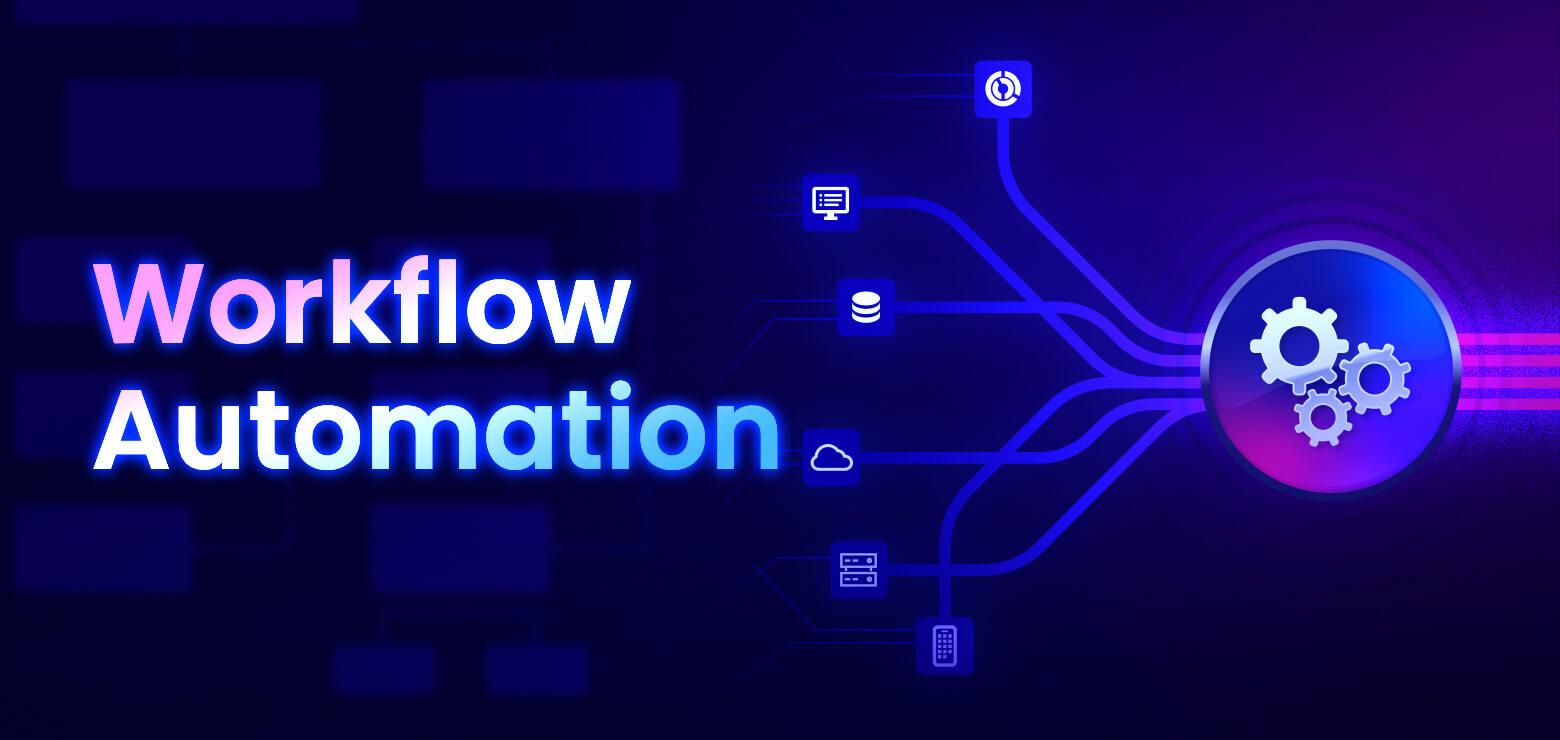
Maximizing Efficiency with Automation in Wireframe Design
In the fast-paced world of design, maximizing efficiency is crucial, especially when it comes to wireframe development. Automation plays a pivotal role in streamlining workflows and enhancing productivity, allowing designers to focus on creativity rather than repetitive tasks. By integrating the right tools into your design process, you can elevate your wireframe design experience to new heights.
One of the main advantages of using automation in wireframe design is speed. With tools that offer pre-built templates and components, designers can quickly assemble their wireframes without starting from scratch. This not only saves time but also minimizes the risk of inconsistencies. A well-structured tool can provide a library of reusable elements, enabling designers to maintain a cohesive look and feel across projects.
Additionally, many wireframe tools now feature collaboration capabilities that enhance teamwork. Real-time editing, commenting, and feedback loops allow multiple stakeholders to engage in the design process seamlessly. Automation can help manage version control, ensuring that everyone is working with the most up-to-date designs. This fosters a more efficient workflow and leads to faster decision-making.
Another area where automation shines is in user testing and feedback collection. Some wireframe design tools come equipped with built-in analytics that track user interactions. This data can be automatically gathered and presented in insightful reports, allowing designers to make informed decisions based on real user behavior. By automating this process, designers can quickly iterate their designs based on user feedback, resulting in a more user-centric final product.
In the realm of automation, integration with other platforms is also essential. The ability to connect wireframe design tools with project management software, prototyping tools, and development environments can streamline the entire design-to-development handoff. This ensures that everyone involved in the project is on the same page, reducing the likelihood of miscommunication and errors.
To further illustrate the impact of automation on wireframe design efficiency, consider the following table showcasing popular tools and their automation features:
| Tool | Key Automation Features |
|---|---|
| Figma | Real-time collaboration, component libraries, and plugins |
| Adobe XD | Auto-animate, repeat grid, and integration with Adobe Cloud |
| Sketch | Symbol libraries, shared styles, and plugin ecosystem |
| Balsamiq | Rapid wireframing, drag-and-drop components, and templates |
By embracing automation in wireframe design, you can not only streamline your workflow but also enhance the overall quality of your designs. It empowers designers to innovate and adapt quickly, ensuring that their wireframes are not only functional but also visually appealing. The future of wireframe design is undoubtedly intertwined with automation, providing endless possibilities for creativity and efficiency.
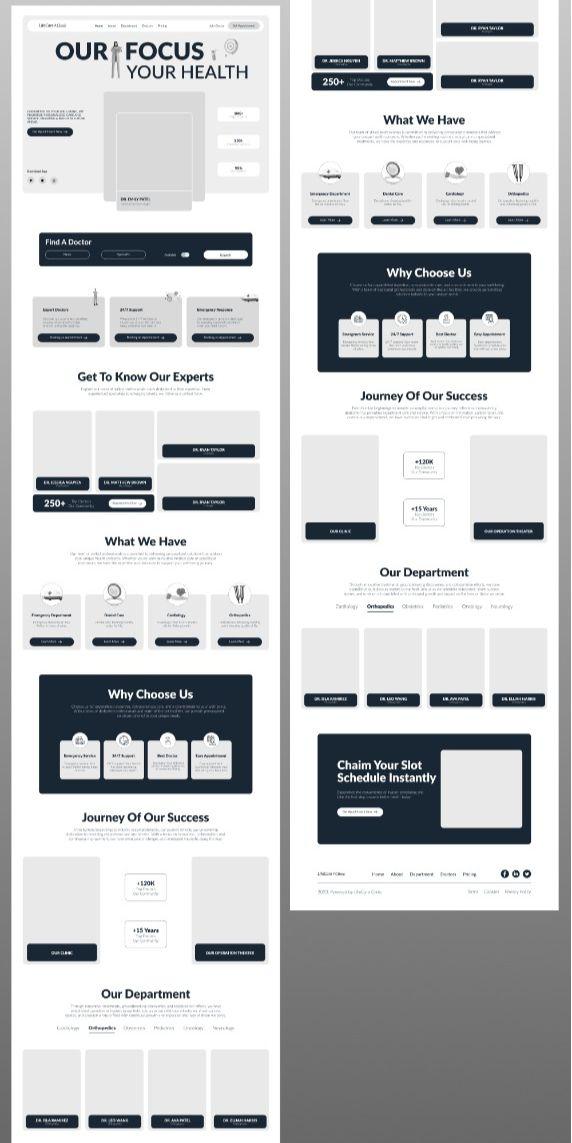
Inspiring Examples of Wireframe Success Stories
Wireframing has revolutionized the design process for countless brands, allowing them to visualize their ideas before diving into full-scale production. One compelling example is Airbnb, which utilized wireframes to streamline its user experience. By sketching out the flow of its platform, they were able to identify pain points early on, resulting in an intuitive interface that has become a benchmark in the industry.
Another notable success story is Spotify. When launching its mobile app, the team relied heavily on wireframes to map user interactions. This approach enabled them to test user engagement and preferences, ultimately leading to features that resonated deeply with their audience. By iterating on these wireframes, Spotify ensured that every function was fine-tuned to enhance the listening experience.
Dropbox also stands out as an inspiring example. In designing its onboarding process, the team created wireframes to visualize user journeys. This allowed them to simplify complex tasks into manageable steps, which significantly improved user retention. Their story illustrates how effective wireframing can lead to a seamless user experience that encourages ongoing engagement.
Even established giants like Facebook have harnessed the power of wireframes. During the redesign of its interface, Facebook employed wireframes to gather user feedback on new features. This iterative process not only saved time but also fostered a community-driven approach to design, ensuring that changes reflected users’ needs and preferences.
The impact of wireframing isn’t limited to tech giants. Small businesses, such as local startups, have also seen remarkable outcomes. For instance, a small e-commerce site utilized wireframes to outline its product pages, leading to a 30% increase in conversions after launching the new design. Their success underscores that effective design tools like wireframes are accessible and beneficial for all businesses, regardless of size.
| Company | Wireframe Purpose | Outcome |
|---|---|---|
| Airbnb | User experience design | Intuitive interface |
| Spotify | Mobile app engagement | Resonant features |
| Dropbox | Onboarding process | Increased user retention |
| User feedback on features | Community-driven design | |
| Local e-commerce site | Product page design | 30% conversion increase |
These inspiring stories demonstrate that wireframing is more than just a design step; it’s a pathway to success. By embracing wireframes, companies can foster innovation, enhance user satisfaction, and ultimately drive business growth. Think of wireframes as the blueprint of your digital project—a crucial part of the construction process that can lead to monumental success.
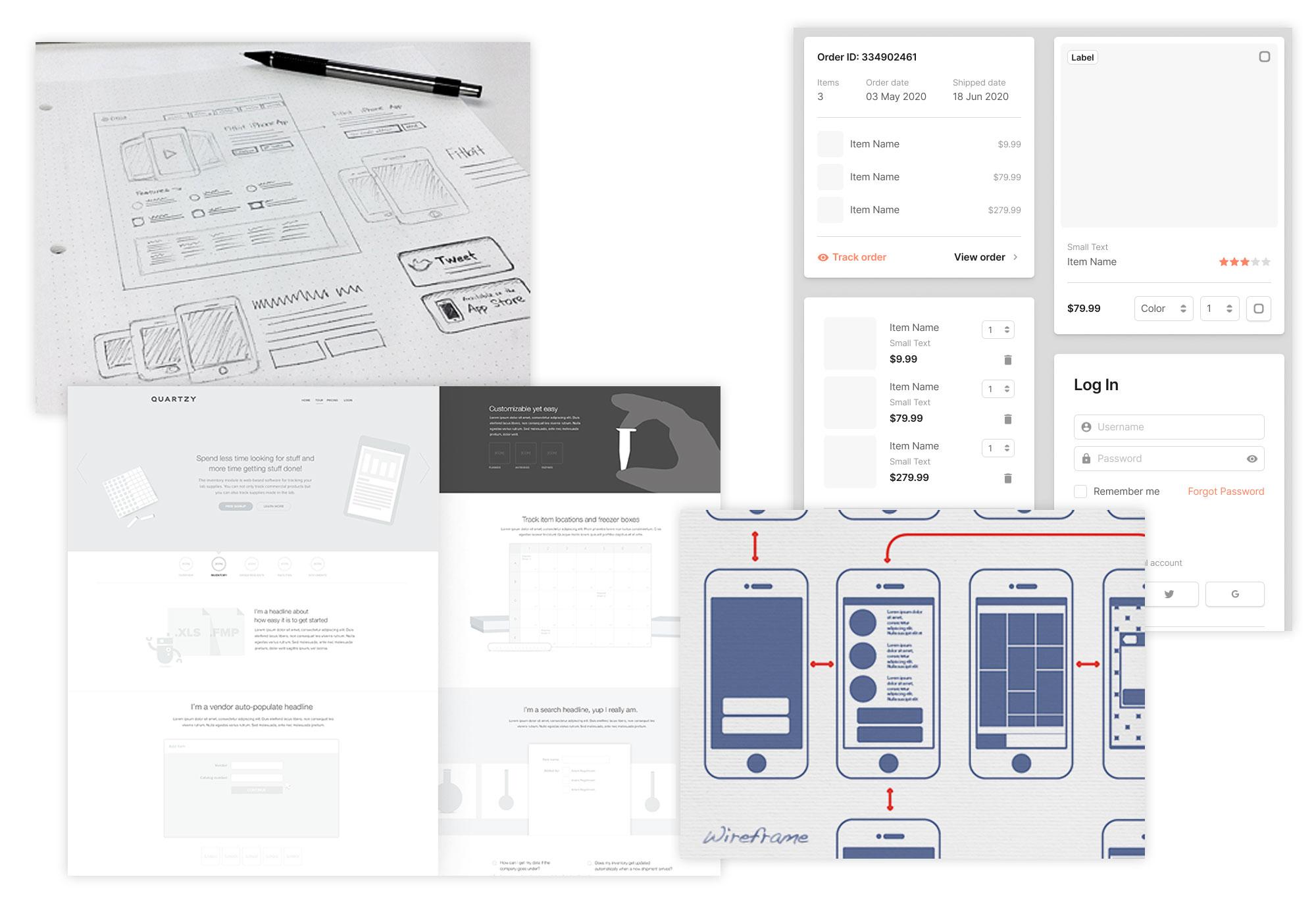
Integrating Wireframes into Your Design Process
Wireframes serve as the backbone of your design process, allowing you to visualize ideas before diving into the nitty-gritty details of your project. By integrating wireframes into your workflow, you can streamline communication among team members and ensure that everyone is aligned with the project goals. This step is vital for identifying potential issues early, saving time and resources in the long run.
One of the greatest advantages of wireframing is its ability to simplify complex concepts. With the right tools, you can create quick, iterative designs that allow for real-time feedback and adjustments. This agile approach not only fosters creativity but also encourages collaboration, leading to a more refined end product. Here are some ways to effectively integrate wireframes into your design process:
- Collaborative Sessions: Organize brainstorming sessions where team members can contribute their ideas directly onto wireframes. This fosters a sense of ownership and ensures that various perspectives are considered.
- Iterative Prototyping: Use wireframes as the first step in your prototyping process. Develop multiple iterations based on stakeholder feedback to progressively refine the design.
- User Testing: Conduct usability tests with wireframes to gather insights and validate your design choices. This will help you identify user pain points early, allowing for adjustments before the final build.
The tools you choose for wireframing can significantly impact how effectively you integrate this process into your design workflow. Consider selecting software that offers flexibility and ease of use, allowing your team to collaborate seamlessly. Look for features like drag-and-drop functionality, customizable templates, and real-time editing capabilities. Here’s a comparison of some popular wireframing tools:
| Tool | Key Features | Best For |
|---|---|---|
| Figma | Real-time collaboration, vector graphics, plugins | Remote teams |
| Sketch | Artboards, symbols, easy prototyping | UI designers |
| Balsamiq | Low-fidelity wireframing, quick mockups | Beginners |
| Adobe XD | Interactive prototypes, design systems | Adobe users |
Moreover, integrating wireframes helps in aligning your design vision with the client’s expectations. By presenting the wireframes early in the process, clients can visualize the layout and functionality, providing valuable feedback that can shape the direction of the project. This not only reduces revisions later on but also builds trust and transparency between you and your clients.
don’t underestimate the power of documentation. Keep a record of adjustments made based on feedback and decision points throughout the wireframing phase. This allows for a clearer understanding of the design evolution and ensures that future projects can benefit from the insights gained during the wireframing process. By weaving wireframes into your overall design strategy, you create a more efficient, collaborative, and user-focused environment.
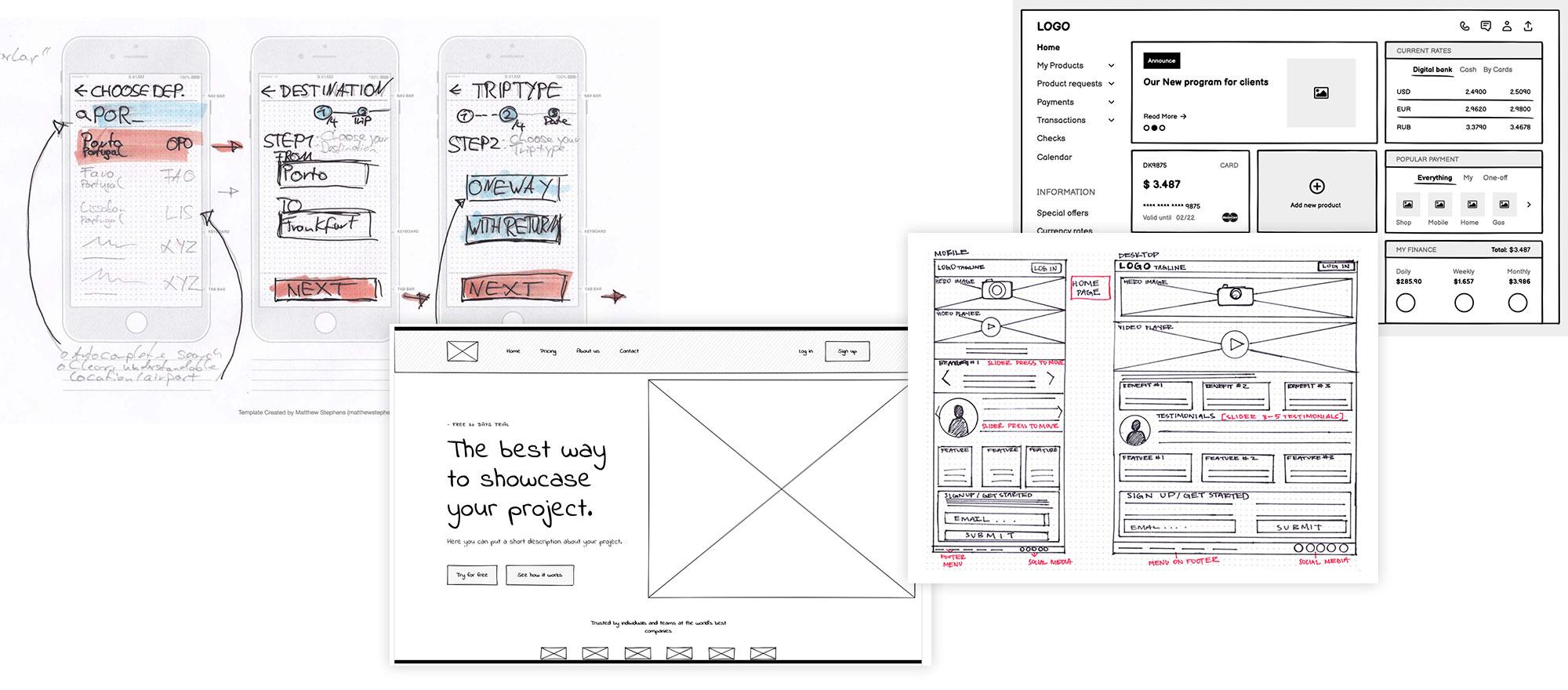
Enhancing User Experience Through Effective Wireframes
Creating an engaging user experience starts with a solid foundation, and wireframes serve as this essential blueprint. These visual guides help designers and stakeholders visualize the structure of a website or application, ensuring a seamless transition from concept to execution. By focusing on layout, functionality, and user interaction, effective wireframes can significantly enhance the overall usability of a product.
When employing wireframes, it’s crucial to prioritize user-centric design. This means understanding the needs, preferences, and behaviors of your target audience. By integrating user feedback early in the design process, you can refine your wireframes to better align with user expectations. Utilizing tools designed for collaborative feedback can streamline this process, allowing for real-time adjustments and enhancements.
Another critical aspect of wireframing is the ability to convey information clearly and concisely. A well-structured wireframe should include:
- Clear navigation paths that guide users effortlessly through the interface.
- Defined content areas that prioritize essential information, ensuring users can find what they need quickly.
- Interactive elements that demonstrate how users will engage with the product.
Moreover, effective wireframes should be adaptable to various devices, ensuring a consistent experience across platforms. Responsive design principles can be incorporated at this stage, allowing designers to visualize how content will reflow on different screen sizes. By embracing a mobile-first approach, you can create wireframes that cater to the ever-growing number of mobile users.
Furthermore, wireframing is not just about aesthetics; it’s about fostering collaboration within your team. Sharing wireframes with developers, marketers, and other stakeholders can lead to valuable insights and innovative ideas. This collaborative spirit can spark discussions on usability and functionality, ultimately leading to a more refined final product. Incorporating feedback loops within your wireframing process encourages open dialogue and helps ensure that all voices are heard.
the impact of well-crafted wireframes on user experience is undeniable. They serve as a bridge between ideas and implementation, helping teams envision the final product while maintaining focus on user needs. By leveraging the right tools and fostering a collaborative environment, you can elevate your wireframing process and, in turn, enhance the overall user experience.

Future Trends in Wireframing Tools You Should Know
The landscape of wireframing tools is evolving rapidly, driven by advancements in technology and changing user needs. As designers and developers strive for efficiency and clarity, several key trends are emerging that will shape the future of these essential tools.
1. AI-Powered Features: The integration of artificial intelligence into wireframing tools is becoming commonplace. From automated layout suggestions to intelligent component placements, AI can streamline the design process. This not only speeds up project timelines but also allows designers to focus on creativity rather than repetitive tasks.
2. Collaborative Design Environments: With remote work becoming the norm, collaborative features are increasingly important. Wireframing tools are enhancing real-time collaboration capabilities, enabling teams to work simultaneously on designs, leave comments, and make instant adjustments. This fosters a more dynamic workflow and ensures that all team members are aligned, regardless of their physical location.
3. Enhanced Prototyping Capabilities: The line between wireframing and prototyping is blurring. Future tools will likely offer more robust prototyping functionalities, allowing for interactive wireframes that closely mimic the final product. This shift will enable stakeholders to visualize and experience user interactions more effectively, leading to better-informed design decisions.
4. Integration with Development Tools: As the design and development processes continue to converge, wireframing tools are expected to integrate more seamlessly with coding environments and version control systems. This will facilitate smoother handoffs from design to development, reducing friction and discrepancies between teams.
5. Customization and Flexibility: The future of wireframing will lean heavily on customization. Designers will seek tools that provide extensive libraries of templates and components while allowing for personal modifications. This flexibility will empower designers to maintain brand consistency and innovate without constraints.
| Trend | Impact |
|---|---|
| AI-Powered Features | Increased efficiency in design processes |
| Collaborative Design Environments | Enhanced teamwork and alignment |
| Enhanced Prototyping Capabilities | Better user interaction insights |
| Integration with Development Tools | Smoother transition from design to code |
| Customization and Flexibility | Empowered designers to innovate |
As these trends unfold, staying abreast of the latest developments will be crucial for designers looking to maintain a competitive edge. Adopting these innovative tools not only enhances productivity but also elevates the quality of the final product, leading to greater user satisfaction.
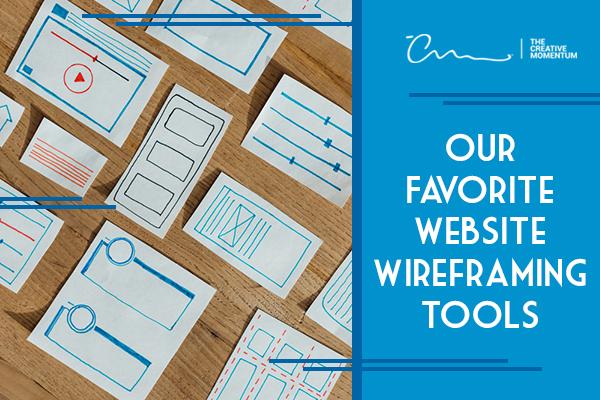
Elevate Your Design Game: Start Wireframing Today
Embrace the power of wireframing to transform your design process. Wireframing allows you to visualize ideas and lay the groundwork for a seamless user experience. With the right tools, you can create interactive and engaging wireframes that not only enhance your design workflow but also communicate your vision effectively to stakeholders and team members.
Consider these top tools that will elevate your wireframing skills:
- Figma: A versatile design tool that supports real-time collaboration. With its intuitive interface and extensive plugin library, Figma allows you to create dynamic wireframes that can be easily shared and modified.
- Balsamiq: Known for its simplicity, Balsamiq offers a drag-and-drop interface that is perfect for quick sketches. The hand-drawn style makes it easy to focus on layout and functionality without getting bogged down by aesthetics.
- Adobe XD: A powerful design and prototyping tool that integrates seamlessly with Adobe’s ecosystem. Its robust features for wireframing, prototyping, and sharing make it a favorite among professionals.
- Axure RP: Ideal for more complex projects, Axure enables you to create detailed wireframes with advanced interactivity. It’s perfect for capturing intricate user flows and micro-interactions.
- Sketch: A staple for many designers, Sketch combines vector design with wireframing capabilities, making it a great choice for those who want to stay within the Apple ecosystem.
- Lucidchart: While primarily a diagramming tool, Lucidchart offers templates for wireframing that can help you quickly visualize ideas, especially for teams that value collaboration.
When selecting a tool, consider your specific needs:
| Tool | Best For | Key Feature |
|---|---|---|
| Figma | Collaboration | Real-time editing |
| Balsamiq | Quick Prototyping | Hand-drawn style |
| Adobe XD | Prototyping | Integration with Adobe suite |
| Axure RP | Complex Designs | Advanced interactivity |
| Sketch | Vector Design | Vector editing tools |
| Lucidchart | Collaboration | Diagramming features |
By investing time in wireframing, you not only save time and resources in the long run but also create a solid foundation for your design projects. The tools mentioned above facilitate a smoother design process, allowing you to focus on creativity and innovation. Don’t hesitate to explore these options and discover how they can empower your design journey and lead to outstanding results.
Frequently Asked Questions (FAQ)
Q&A: 6+ Best Tools to Design Wireframes
Q1: Why are wireframes essential in the design process?
A1: Wireframes serve as the blueprint of your digital product. They allow you to visualize the layout and functionality before diving into the actual design. This early-stage clarity helps reduce potential miscommunications and ensures that all stakeholders share a common vision, ultimately saving time and resources.
Q2: What features should I look for in a wireframing tool?
A2: The best wireframing tools offer user-friendly interfaces, collaborative features, customizable templates, and a range of design elements. Look for tools that allow you to create interactive prototypes, as this can enhance user testing and feedback, bringing your vision to life even before development begins.
Q3: Can I use these tools for collaborative projects?
A3: Absolutely! Many wireframing tools are designed with collaboration in mind. They enable teams to work together in real-time, share feedback, and iterate designs seamlessly. This collaborative aspect not only fosters creativity but also ensures that every voice is heard, leading to a more refined final product.
Q4: Are these tools suitable for both beginners and experienced designers?
A4: Yes! The best wireframing tools cater to all skill levels. Beginners will appreciate intuitive drag-and-drop interfaces and pre-made templates, while experienced designers will benefit from advanced features that allow for precise customization and complex interactivity. Everyone can find a tool that meets their needs and enhances their design process.
Q5: What are some popular wireframing tools that stand out?
A5: Here are a few gems in the wireframing world:
- Balsamiq: Known for its simplicity, it’s perfect for quick sketching.
- Figma: A robust collaborative tool that combines design and prototyping effortlessly.
- Sketch: A favorite among UI/UX designers, offering powerful features for high-fidelity wireframes.
- Adobe XD: Great for those already in the Adobe ecosystem, with excellent integration and collaboration options.
- Axure RP: Ideal for complex projects requiring detailed interactions.
- InVision: Focuses on creating interactive prototypes, making it easy to visualize user flows.
Q6: How do I choose the right tool for my project?
A6: Start by assessing your project requirements and team dynamics. Consider factors such as project complexity, team size, and collaboration needs. Don’t hesitate to try out different tools through free trials to see which interface resonates with you and your team. The right tool will inspire creativity and streamline your design process!
Q7: Can wireframing tools help improve user experience?
A7: Absolutely! Wireframing tools allow for early user testing and feedback, which is crucial for creating a positive user experience. By visualizing the user journey and making iterative changes based on real user insights, you can craft a product that truly meets the needs and expectations of your audience.
Q8: How do I get started with wireframing if I’m new to it?
A8: Begin by familiarizing yourself with the basic principles of wireframing. Choose a tool that feels comfortable for you and start sketching out simple layouts. Focus on functionality over aesthetics at this stage. As you gain confidence, explore more advanced features and techniques. Remember, practice makes perfect—your wireframing skills will grow with each project!
Q9: What’s the takeaway from using wireframing tools?
A9: Embracing wireframing tools is about more than just drawing lines and boxes; it’s about laying the groundwork for innovation. These tools empower you to visualize ideas, foster collaboration, and elevate your design process. With the right tool in hand, you can transform your concepts into reality, creating user-centric designs that captivate and engage. Start your wireframing journey today and unlock the full potential of your creative vision!
Future Outlook
As we wrap up our exploration of the 6+ best tools to design wireframes, it’s clear that the right resources can elevate your design process and help you bring your ideas to life. Each tool we’ve discussed offers unique features that cater to different needs, whether you’re a seasoned designer or just starting your journey.
Embrace the power of these tools to streamline your workflow, enhance collaboration, and spark your creativity. Remember, wireframing is not just about laying out a structure; it’s about visualizing your vision and creating a blueprint for success.
So, take the leap! Experiment with these tools, find the ones that resonate with your style, and watch as your concepts transform into compelling designs. The world is waiting for your innovative ideas—start sketching your future today! Your next great project is just a wireframe away.




